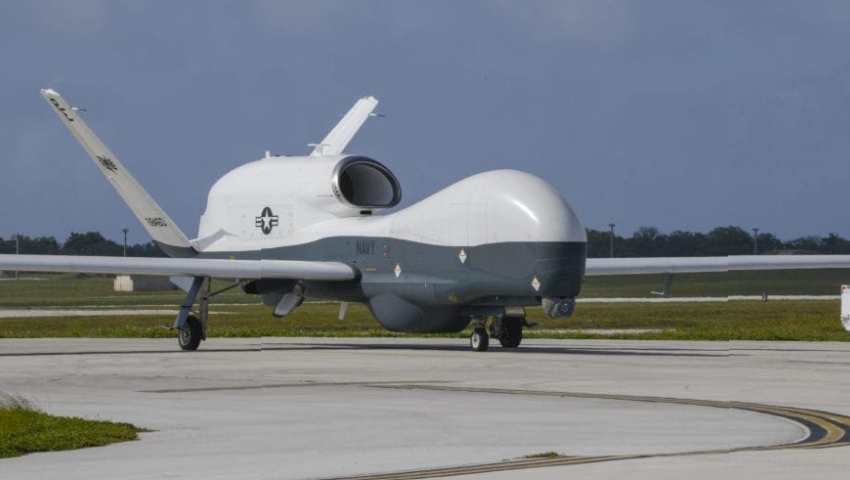The MQ-4C Triton is doing “better than expected”, the US Navy’s program executive officer has said following a year of deployment in Guam.
The US Navy has lauded the capabilities of the Northrop Grumman-built MQ-4C Triton UAV, which has been tested by Unmanned Patrol Squadron 19 during its deployment in Guam over the past 12 months.
The squadron deployed two MQ-4Cs in January 2020 in a bid to establish early operational capability, with the UAVs providing surveillance for the US 7th Fleet while also exercising the logistics train expected to support future deployments.
The UAV's performance was assessed during a two-hour review with the Navy’s Air Boss, Vice Admiral Kenneth Whitesell.
Speaking at the at the Unmanned Systems-Defense webinar of the Association for Unmanned Vehicle Systems International earlier this week, Rear Admiral Brian Corey, program executive officer for unmanned and strike weapons, said UAVs exceeded expectations.
“Triton is doing very, very well,” he said. “In fact, it’s doing better than we expected in Guam,” he said.
RADM Corey continued, “First off, anyone that has operated an air force knows that airplanes work and then they break. We have an air force of two [Tritons] and we put Triton out there [Guam] with early operational capability, knowing that we didn’t have a fully fleshed-out set of depot-level maintenance and that sort of thing.
“So, we have had some amazing success here over these last several months. We got over there, we were able to fly, we were able to interact in the airspace until we could fly in the entire Pacific region, until we got co-operation from our partners.”
RADM Corey said the aircraft delivered products to the 7th Fleet and to the Pacific Fleet commander within mission parameters.
The Triton is now expected prove its operational capability in other locations over the coming months to achieve integrated functional capability 4 (IFC4).
Australia is expected to receive the first of six to seven Triton air vehicles in 2023, with Northrop Grumman expected to begin building the airframe later this year.
Remotely flying out of RAAF Edinburgh, South Australia, the Tritons are capable of monitoring 5.2 million square kilometres in a 24-hour mission and seamlessly flying a round trip for sustained surveillance and in support of allied freedom of navigation operations in the South China Sea from the Northern Territory – increasing Australia’s interoperability with key allies, particularly the US.
[Related: Northrop Grumman, Chief Information Officer Group prepare for Triton Arrival]








